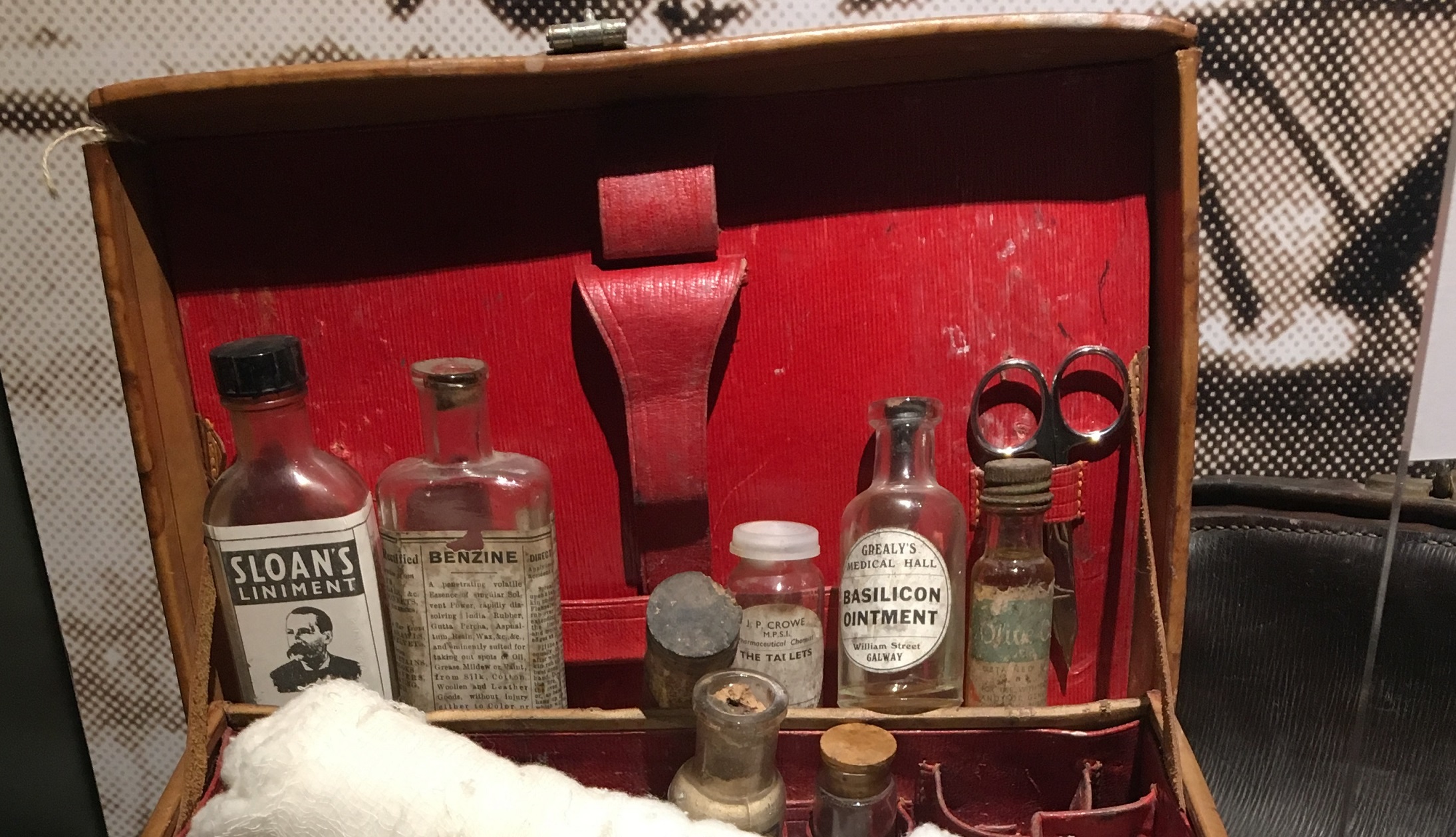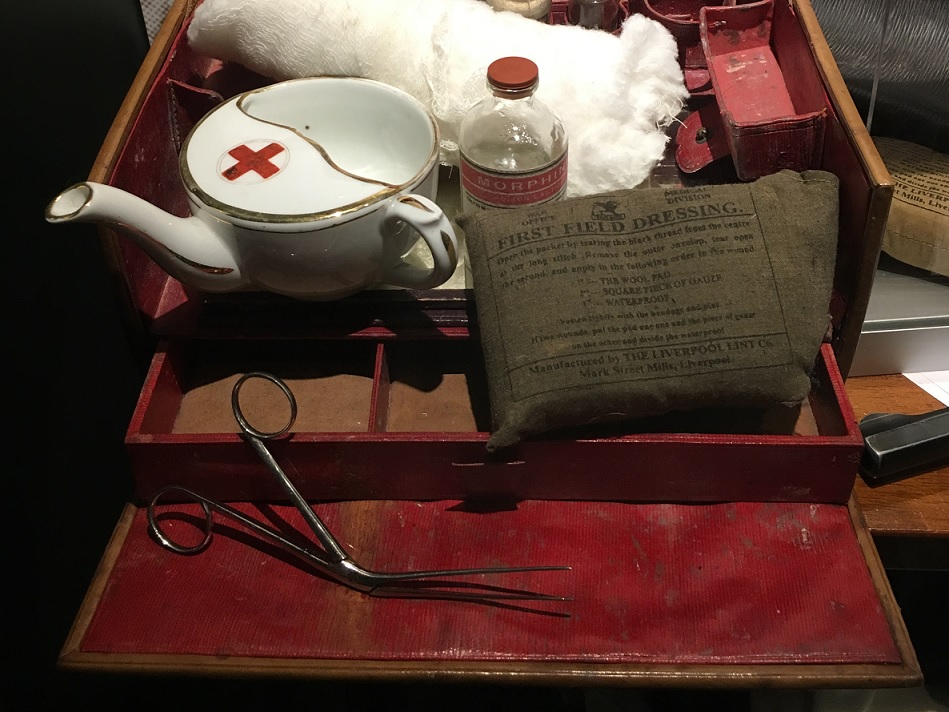I spotted this little piece of medical history in Dublin’s General Post Office. Besides being a buzzing postal hub, the building also doubles up as a museum on the 1916 Irish uprising against British rule.
The case is a medical kit used on the battlefield, and provides a snapshot of medicine at the time. So what exactly did a 1916 Irish army medic carry about?
Sloan’s Liniment: This liniment was developed by Andrew Sloan, a self-taught U.S. veterinarian, in the late 1800s to ease horse muscle pain after a hard day’s work. The recipe is said to have been passed on to him by local Native Americans. It was sold from farm to farm by his sons, until one farmer rubbed it onto his own back and realised that it worked just as well on him, opening up much larger marketing possibilities for the Sloans.
The liniment is still somewhat in use today as a herbal remedy, though not in army kits, where it has been replaced by painkillers such as paracetamol and ibuprofen. Its main ingredient is Capsaicin, extracted from cayenne peppers – the same chemical that is responsible for peppers’ spicy taste. When applied to the skin, Capsaicin has been shown to desensitize pain receptors, dulling pain.
Benzine: This is a mixture of hydrocarbons (chemicals that contain only hydrogen and carbon) obtained from petroleum. It was used as a battlefield solvent, to clean grease and dirt off the skin around wounds. This is no longer used in modern times, and wound cleaning is now typically carried out with saline solution.
Basilicon ointment: This is a herbal remedy that was spread on wounds to encourage healing and help draw out splinters and shrapnel. It was typically composed of a mixture of rosin (extracted from conifer trees), beeswax, and olive oil. Rosin has been shown to have antimicrobial qualities, however this ointment is no longer used in medical care today, having been replaced by better products such as antibiotics and antiseptics. However, variants of the formula can be purchased from herbal remedy manufacturers.
Morphine: This painkiller needs no introduction and is still in use today. First extracted from the opium poppy in the early 1800s, the drug is still listed on the WHO’s list of Essential Medicines for health systems. Its roots can be traced all the way back to Byzantine times (around 300 B.C.), where poppy extracts were used for pain relief. Unfortunately its extensive use on battlefields has led to “soldier’s disease”; widespread morphine addiction.
The kit contains other unlabeled bottles, together with various field dressings, a porcelain medicine feeder, and other tools. It’s also clear that ergonomics has advanced in tandem with chemistry and medicine. I can’t imagine having to run onto a battlefield, dodging sniper fire, carrying this breakable bulk – can you?
Booking.com
If you’d like to see this in person, the General Post Office is in the center of Dublin (mapped below) and exhibit opening times and prices can be found here.

